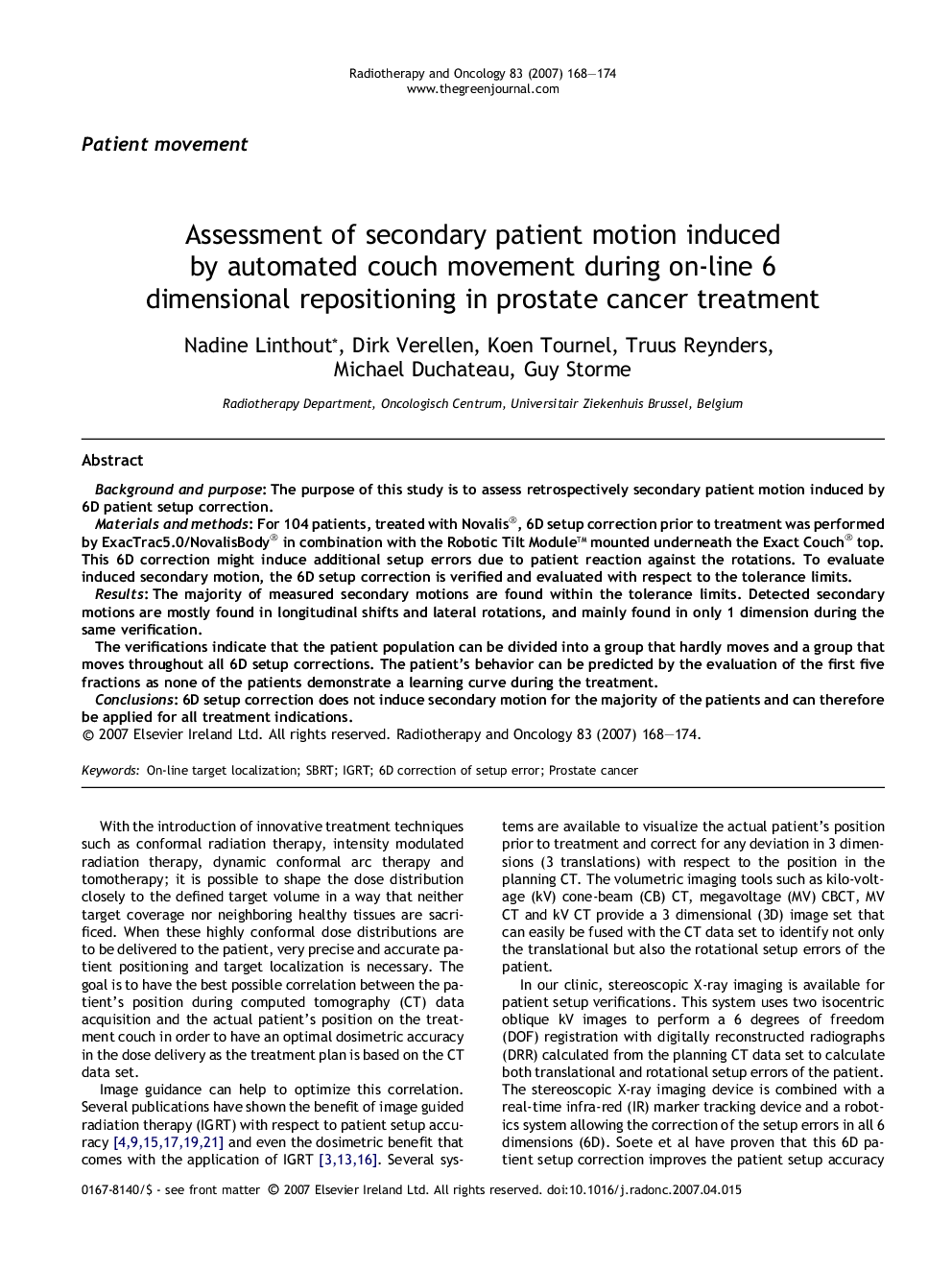| Article ID | Journal | Published Year | Pages | File Type |
|---|---|---|---|---|
| 2161012 | Radiotherapy and Oncology | 2007 | 7 Pages |
Background and purposeThe purpose of this study is to assess retrospectively secondary patient motion induced by 6D patient setup correction.Materials and methodsFor 104 patients, treated with Novalis®, 6D setup correction prior to treatment was performed by ExacTrac5.0/NovalisBody® in combination with the Robotic Tilt Module™ mounted underneath the Exact Couch® top. This 6D correction might induce additional setup errors due to patient reaction against the rotations. To evaluate induced secondary motion, the 6D setup correction is verified and evaluated with respect to the tolerance limits.ResultsThe majority of measured secondary motions are found within the tolerance limits. Detected secondary motions are mostly found in longitudinal shifts and lateral rotations, and mainly found in only 1 dimension during the same verification.The verifications indicate that the patient population can be divided into a group that hardly moves and a group that moves throughout all 6D setup corrections. The patient’s behavior can be predicted by the evaluation of the first five fractions as none of the patients demonstrate a learning curve during the treatment.Conclusions6D setup correction does not induce secondary motion for the majority of the patients and can therefore be applied for all treatment indications.
